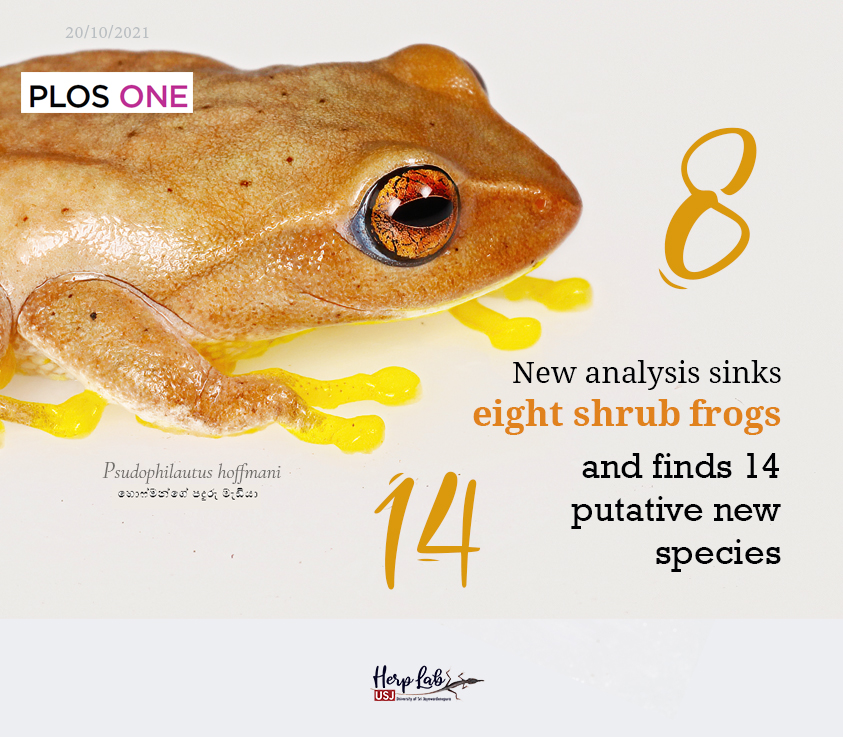
Authors: Gajaba Ellepola, Jayampathi Herath, Kelum Manamendra-Arachchi, Nayana Wijayathilaka, Gayani Senavirathne, Rohan Pethiyagoda and Madhava Meegaskumbura.
Journal: Plosone
Sri Lanka is an amphibian hotspot of global significance. Its anuran fauna is dominated by the shrub frogs of the genus Pseudophilautus. Except for one small clade of four species in Peninsular India, these cool-wet adapted frogs, numbering some 59 extant species, are distributed mainly across the montane and lowland rain forests of the island. With species described primarily by morphological means, the diversification has never yet been subjected to a molecular species delimitation analysis, a procedure now routinely applied in taxonomy. Here we test the species boundaries of Pseudophilautus in the context of the phylogenetic species concept (PSC). We use all the putative species for which credible molecular data are available (nDNA–Rag-1; mt-DNA– 12S rRNA, 16S rRNA) to build a well resolved phylogeny, which is subjected to species delimitation analyses. The ABGD, bPTP, mPTP and bGMYC species delimitation methods applied to the 16S rRNA frog barcoding gene (for all species), 12S rRNA and Rag-1 nDNA grouped P. procax and P. abundus; P. hallidayi and P. fergusonianus; P. reticulatus and P. pappilosus; P. pleurotaenia and P. hoipolloi; P. hoffmani and P. asankai; P. silvaticus and P. limbus; P. dilmah and P. hankeni; P. fulvus and P. silus.. Surprisingly, all analyses recovered 14 unidentified potential new species as well. The geophylogeny affirms a distribution across the island’s aseasonal ‘wet zone’ and its three principal hill ranges, suggestive of allopatric speciation playing a dominant role, especially between mountain masses. Among the species that are merged by the delimitation analyses, a pattern leading towards a model of parapatric speciation emerges ongoing speciation in the presence of gene flow. This delimitation analysis reinforces thespecies hypotheses, paving the way to a reasonable understanding of Sri Lankan Pseudophilautus, enabling both deeper analyses and conservation efforts of this remarkable diversification.





